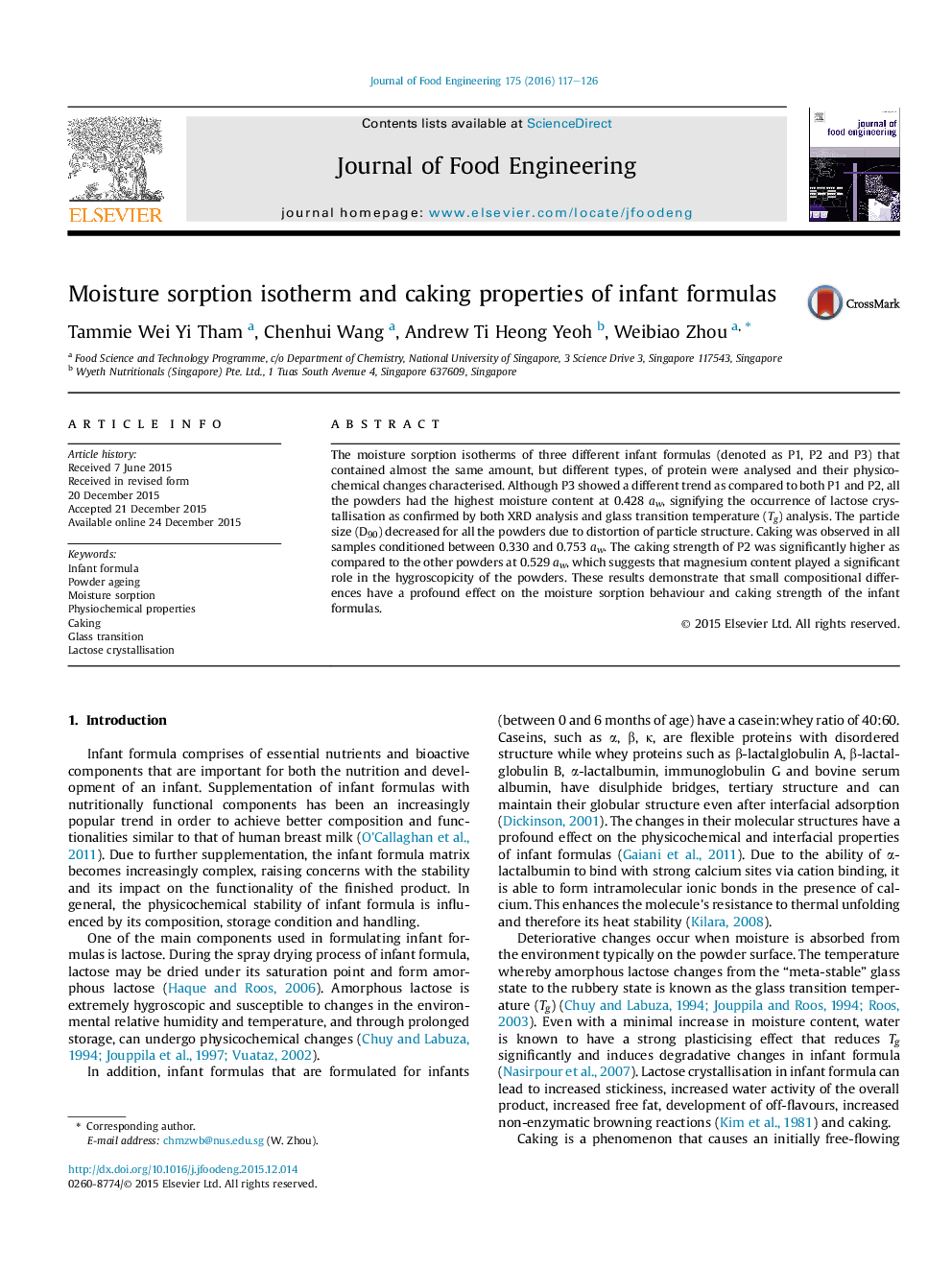| Article ID | Journal | Published Year | Pages | File Type |
|---|---|---|---|---|
| 222750 | Journal of Food Engineering | 2016 | 10 Pages |
•Lactose crystallisation occurred at 0.428 aw for all the three powders.•Tg and XRD analyses confirmed lactose crystallisation.•D90 decreased for all the powders.•Highest caking strength was recorded in P2 at 0.529 aw.•Small compositional differences led to large differences in sorption and caking.
The moisture sorption isotherms of three different infant formulas (denoted as P1, P2 and P3) that contained almost the same amount, but different types, of protein were analysed and their physicochemical changes characterised. Although P3 showed a different trend as compared to both P1 and P2, all the powders had the highest moisture content at 0.428 aw, signifying the occurrence of lactose crystallisation as confirmed by both XRD analysis and glass transition temperature (Tg) analysis. The particle size (D90) decreased for all the powders due to distortion of particle structure. Caking was observed in all samples conditioned between 0.330 and 0.753 aw. The caking strength of P2 was significantly higher as compared to the other powders at 0.529 aw, which suggests that magnesium content played a significant role in the hygroscopicity of the powders. These results demonstrate that small compositional differences have a profound effect on the moisture sorption behaviour and caking strength of the infant formulas.
